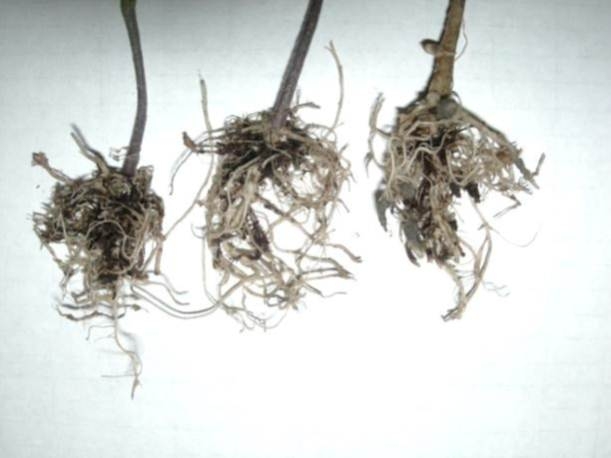This is the third in my series of posts outlining current University of California weed science research published in the California Weed Science Society (CWSS) Research Update and News (June 2013, Volume 9, #2).
Kurt Hembree and Tom Turini (both UCCE Farm Advisors in Fresno Co) discuss some issues related to herbicide persistence and crop safety in processing tomato that appears to be related to changing irrigation practices. Historically, tomato crops were sprinkler irrigated after planting and then furrow (flood) irrigated for the remainder of the season.
In recent years, however, much of the industry has switched to irrigating with buried drip systems. This has been great for productivity (increased yields) and also water use efficiency and has also benefited weed control because the surface stays dryer and fewer weeds germinate during the season. However Kurt and Tom suggested that that the dryer surface and reduced tillage may be having an unintended consequence of greater persistence of common dinitroanaline herbicides used in the system. I touched on this concept in an earlier post about bioassays for residual herbicides - this is a real world example!
I think this is really interesting work that is very relevent to a major California commodity. THe report begins on page 5 of the CWSS Research Update
Brad
Concerns of Increased Dinitroanaline Herbicide Carryover in Buried Drip Tomatoes
by Kurt Hembree and Tom Turini
For decades, dinitroaniline herbicides (DNH) were used pre-plant in tomatoes and crops rotated with tomatoes with few negative issues reported. However, reports of DNH-related damage of processing tomatoes recently increased in Fresno County. Fifteen years ago processing tomatoes were primarily sprinkler irrigated early, furrow irrigated once established, and the field was annually tilled deeply. Since about five years ago, most processing tomatoes have been irrigated with drip irrigation throughout the season and tillage is limited to the upper four to six inches of the soil profile. This shift was triggered by increasing costs of labor to move sprinkler pipe, fuel and equipment for land preparation, and water, as well as the much higher yields achieved with drip irrigated systems. An added benefit of using buried drip irrigation is that the bed surface remains dry during the growing season, resulting in less in-season weed emergence. A few growers use overhead sprinkler irrigation to establish tomatoes before switching to drip irrigation in-season. To reduce cost of replacing drip tape every time a new crop is planted, the tape is buried 10 to 12" deep and left in-place for three to five years. After harvest, the beds are tilled shallow to destroy crop residues, maintaining bed integrity in preparation for the next crop planting.
Crop rotation options are somewhat limited under this approach, including tomatoes, cotton, dry beans, and melons, all of which DNHs are routinely used. Processing tomatoes are commonly planted in the same field for three consecutive years. In 2010, about 2/3 of the processing tomato acreage in the county was treated with pre-plant DNHs; ½ each with trifluralin (Treflan) and pendimethalin (Prowl H2O). Treflan has been used for decades in processing tomatoes, while Prowl H2O has only been registered since 2008. In tomatoes, DNHs are applied to preformed beds and mechanically incorporated two to three inches deep. Tomatoes are then mechanically transplanted so their root plugs are placed deeper than the herbicide layer. Planting too shallow can affect tomato root development, reducing stand, growth, and yield. Trifluralin and pendime-thalin are moderately persistent in the soil with a fairly short half-life (about 45 days), which aids their use among annual crop rotations.
DNH-like damage increased substantially in 2009. That year, stunted plants (fig. 1) with substantial reduc-tion in root development (fig. 2) were observed in nine commercial fields in western Fresno County. Several factors were common to nearly all of the fields where injury was observed: 1) pendimethalin (Prowl H2O) was used pre-plant and/or in prior crops, 2) beds had remained in place for 1-3 years, 3) buried drip irrigation was used, 4) shallow (<6" deep) tillage was used, 5) a shallow planting depth (top of root plug ±3" deep) with some fields deeper than 4", and 6) below-normal rainfall preceding planting (2009/10 and 2011/12). ....Click here to read the full research update.
Attached Images:
